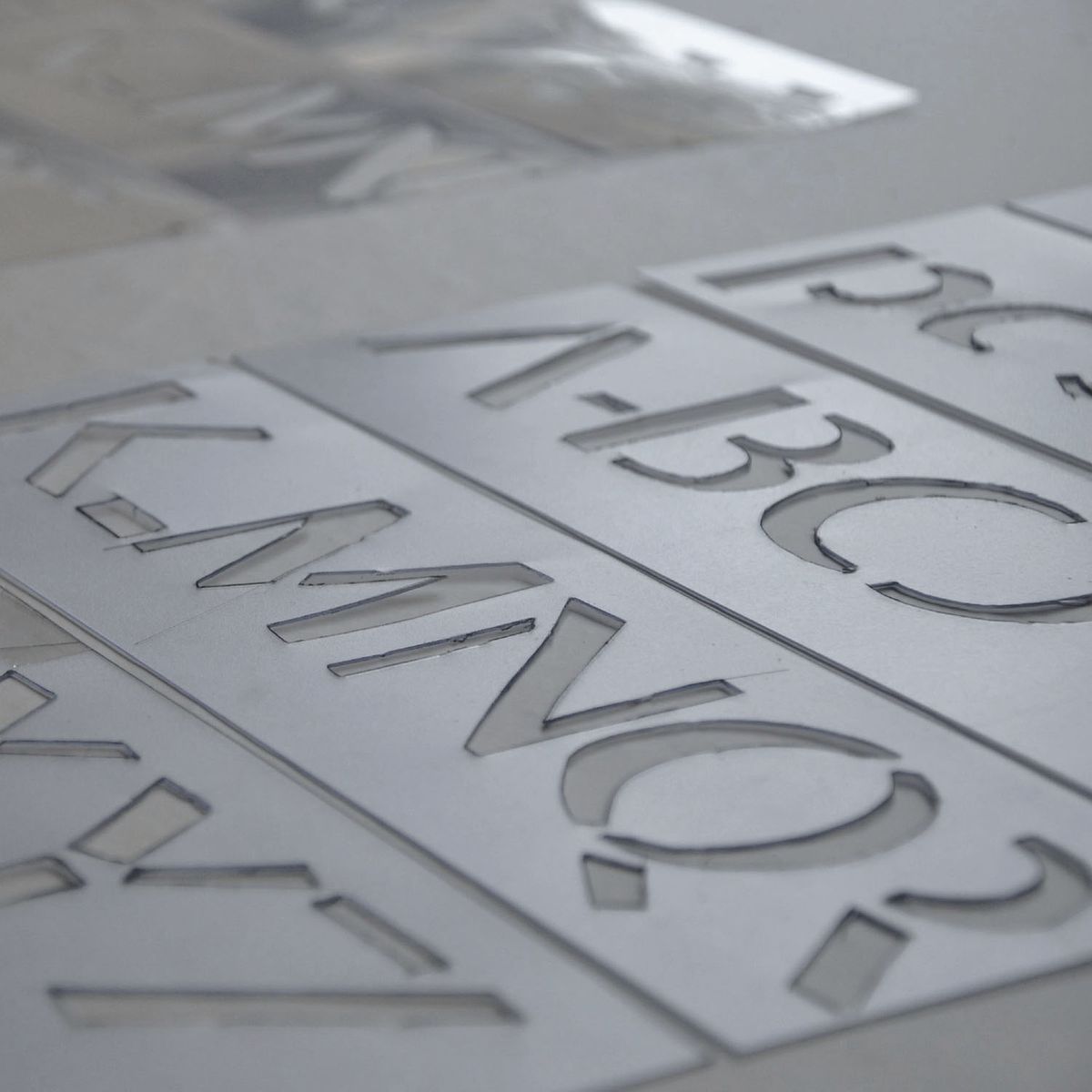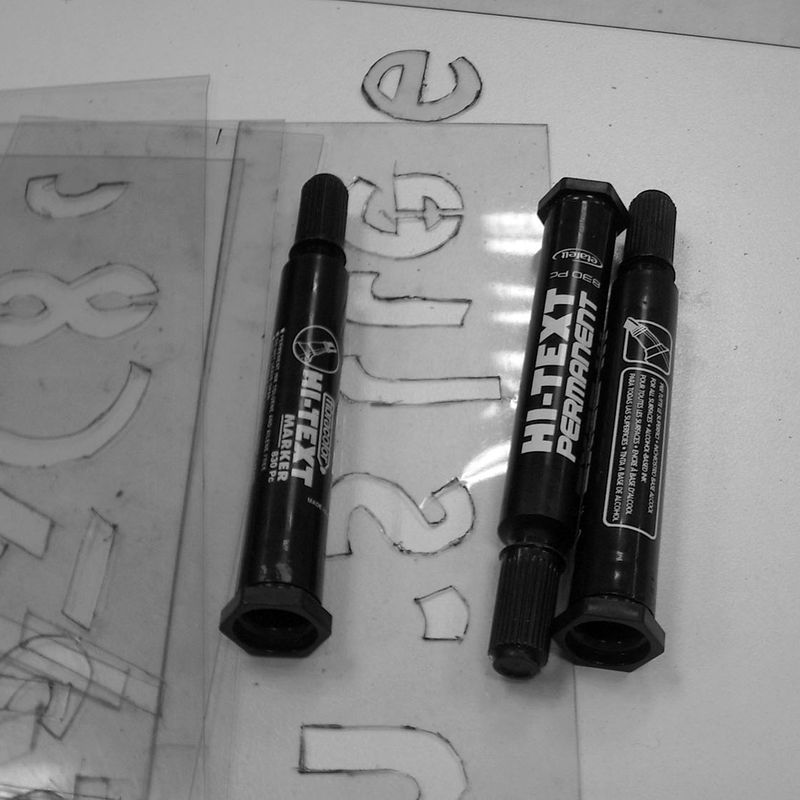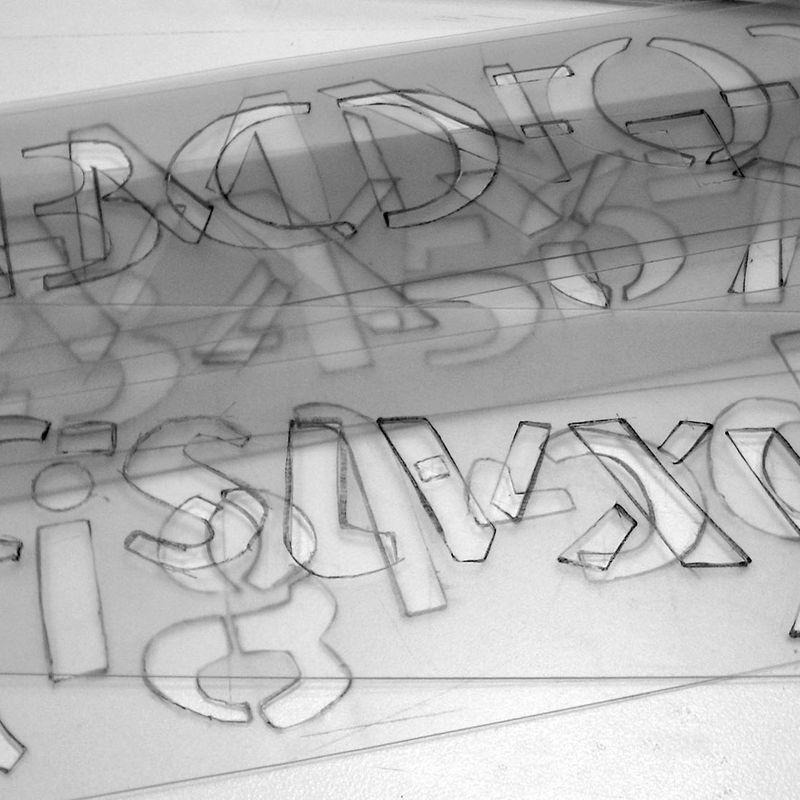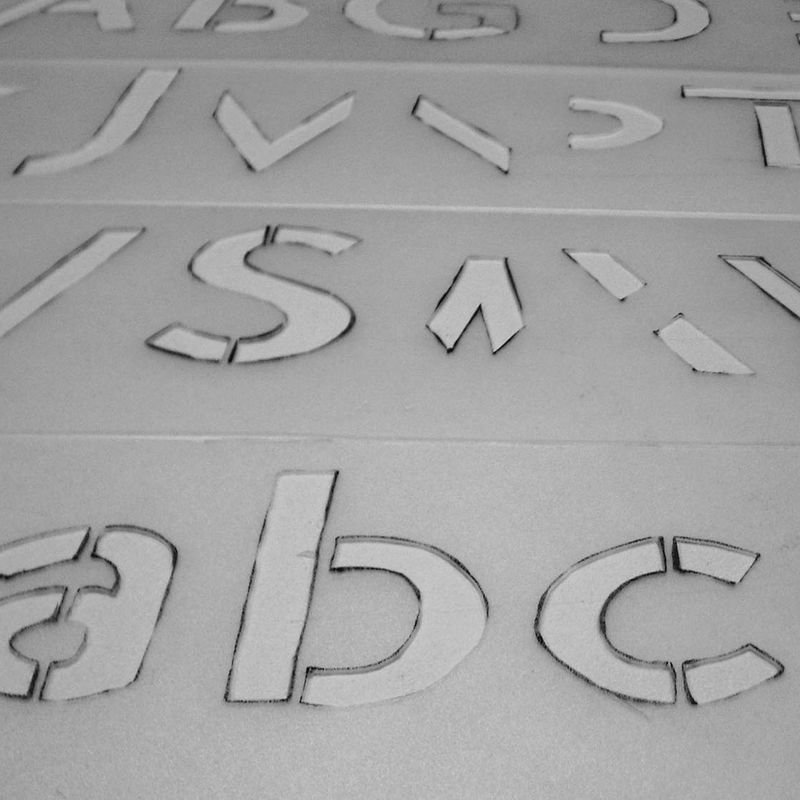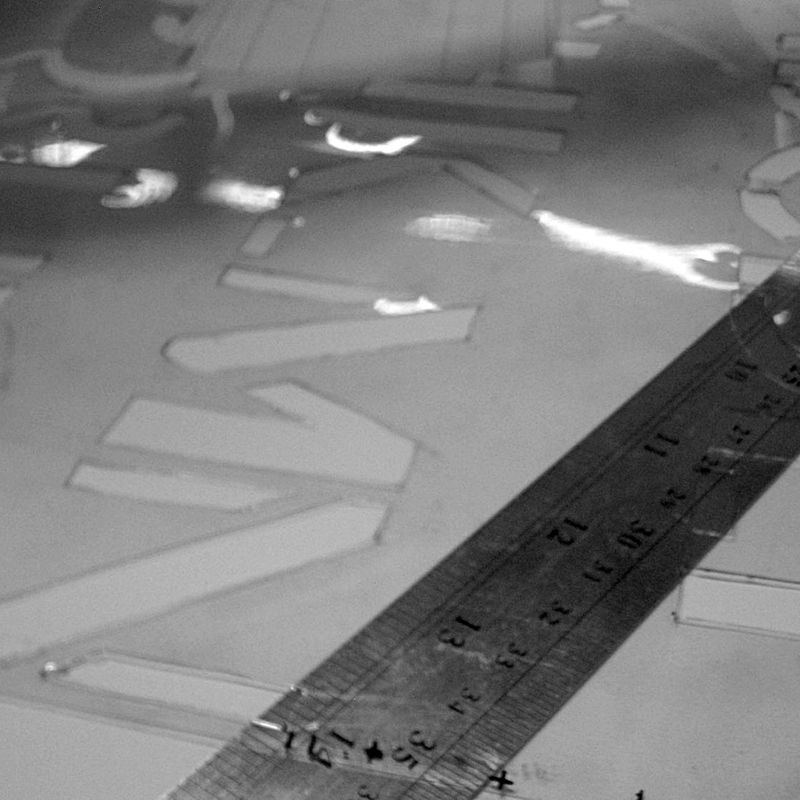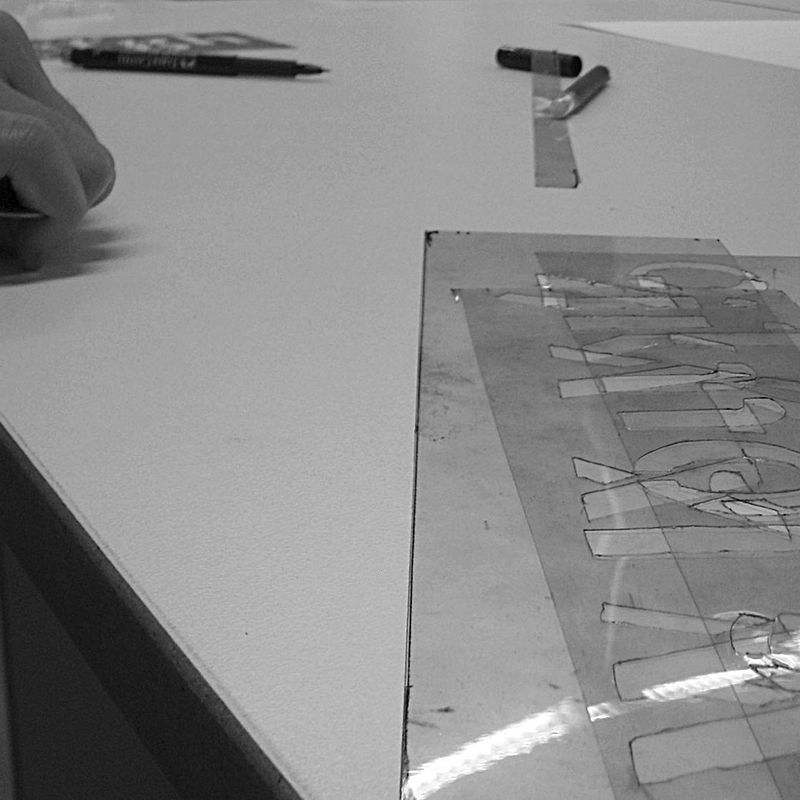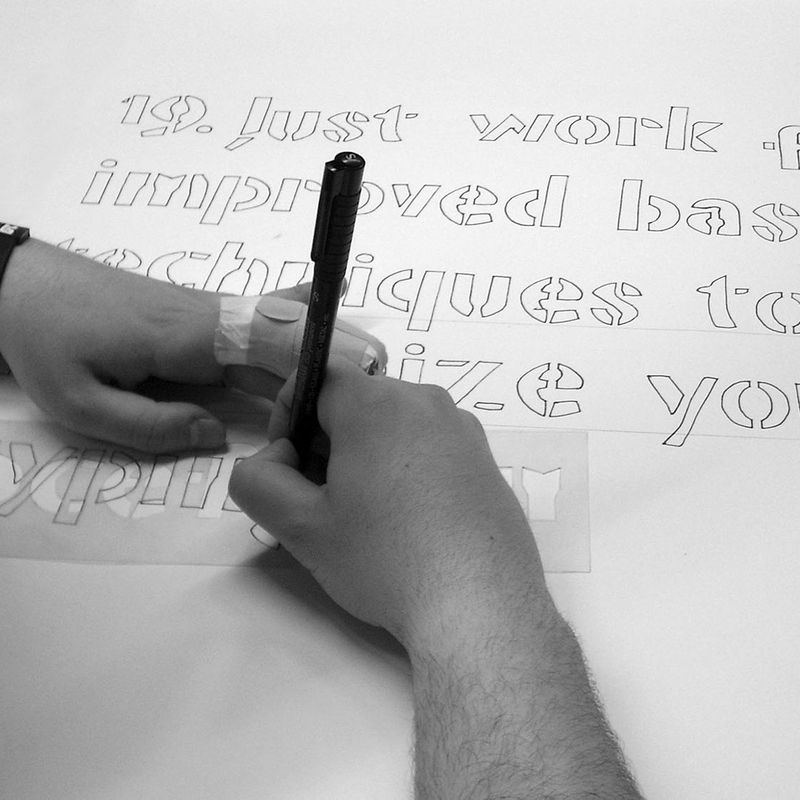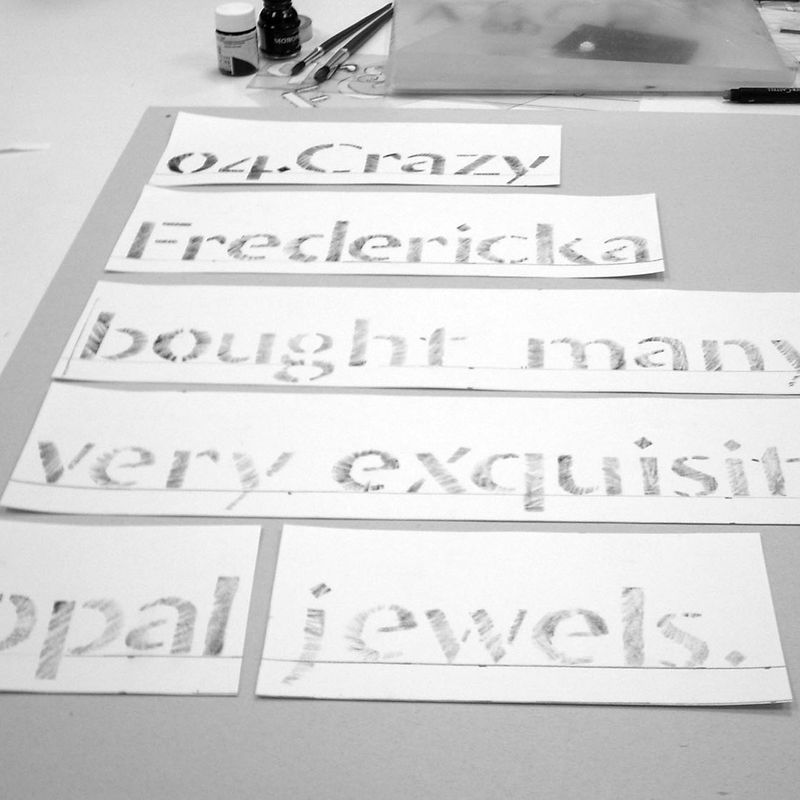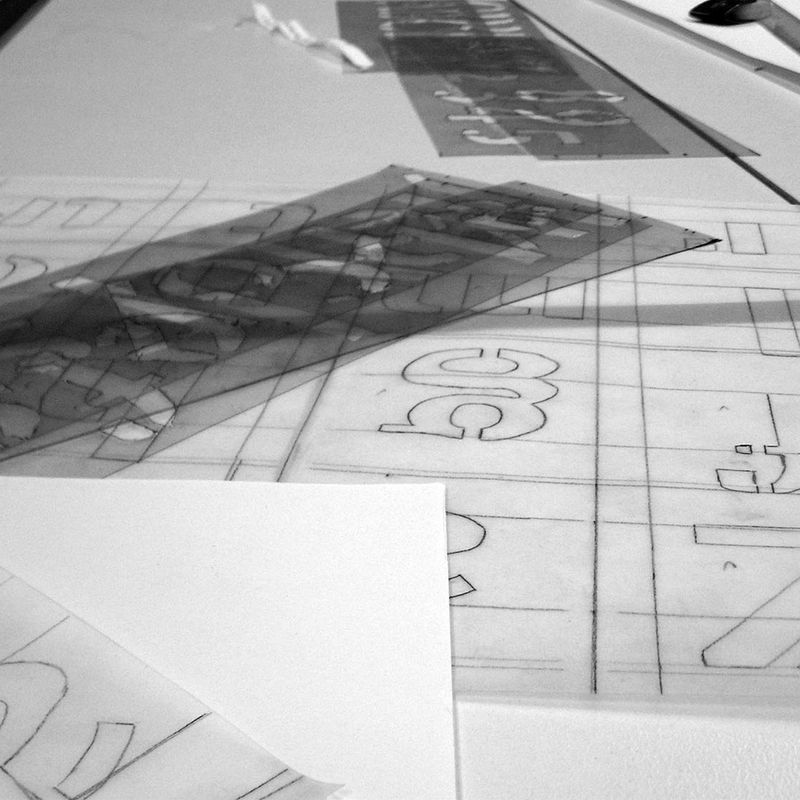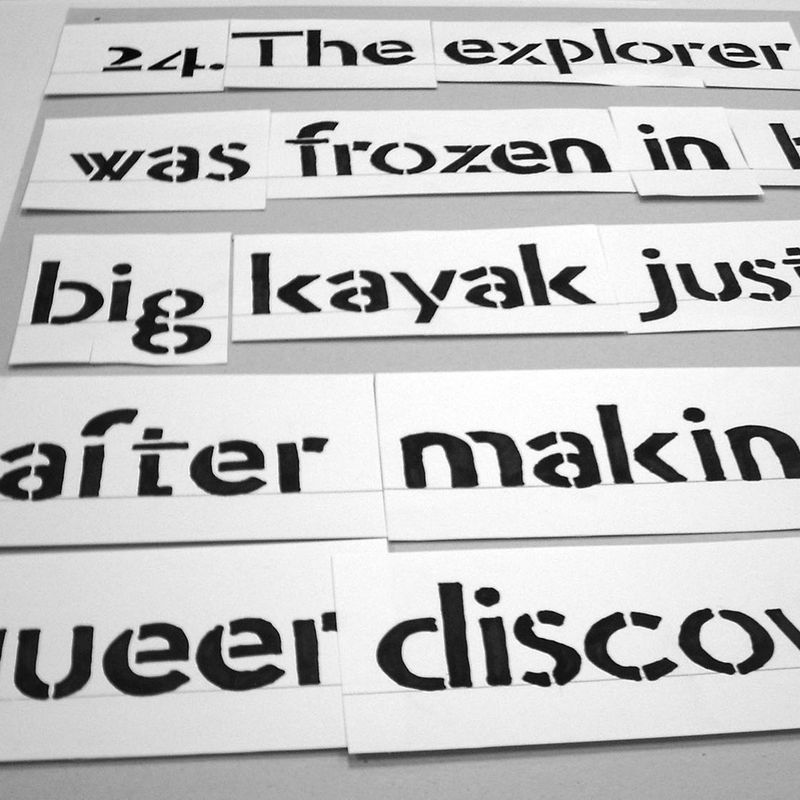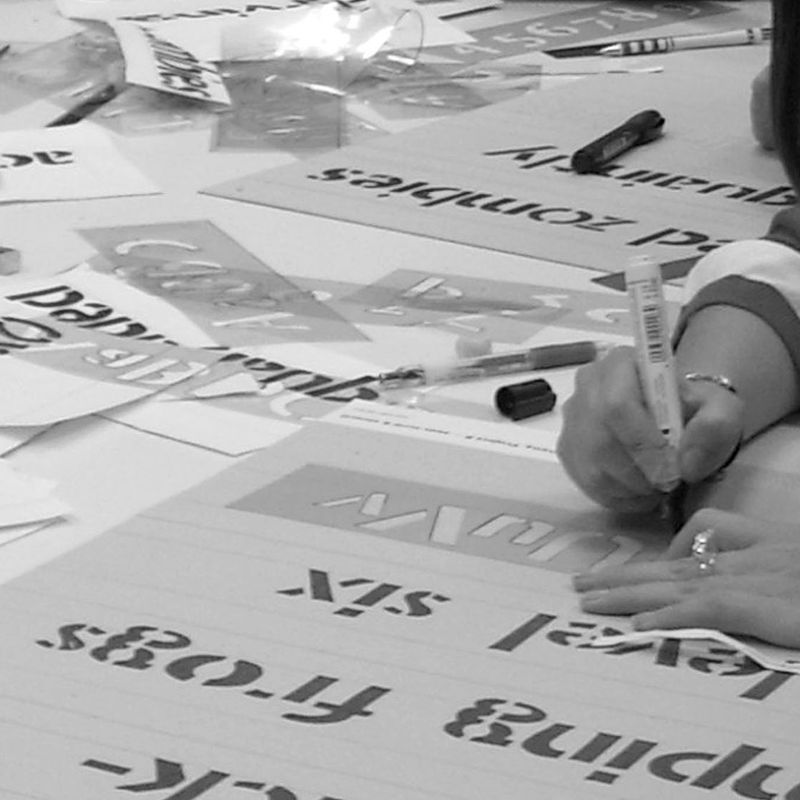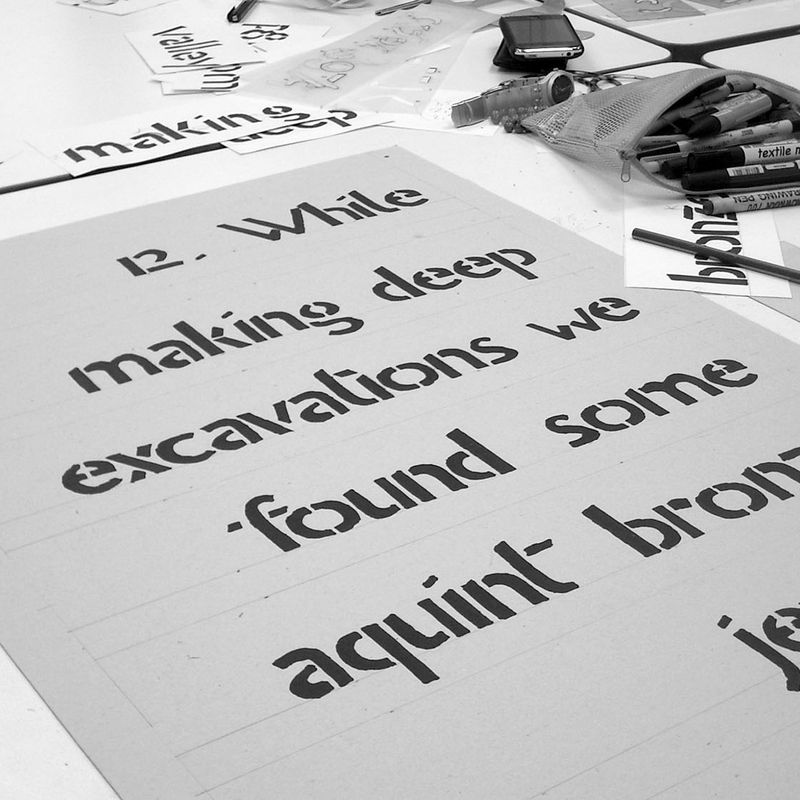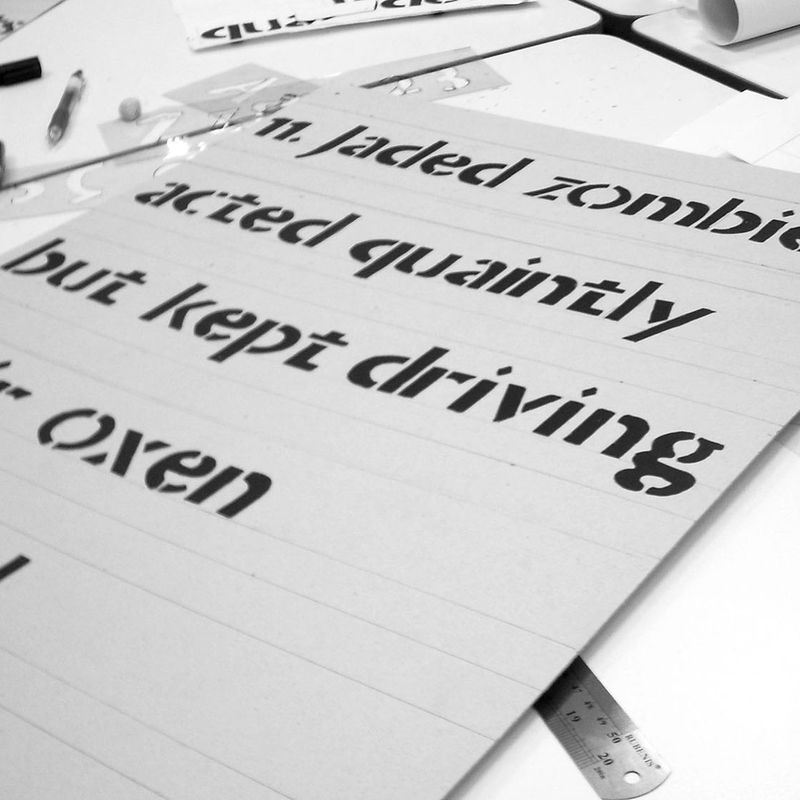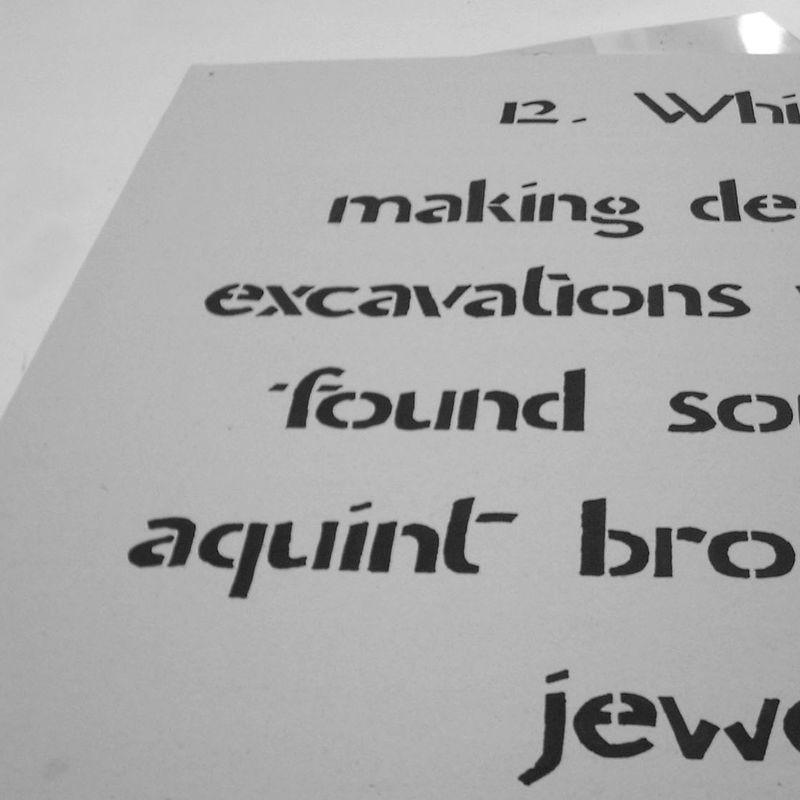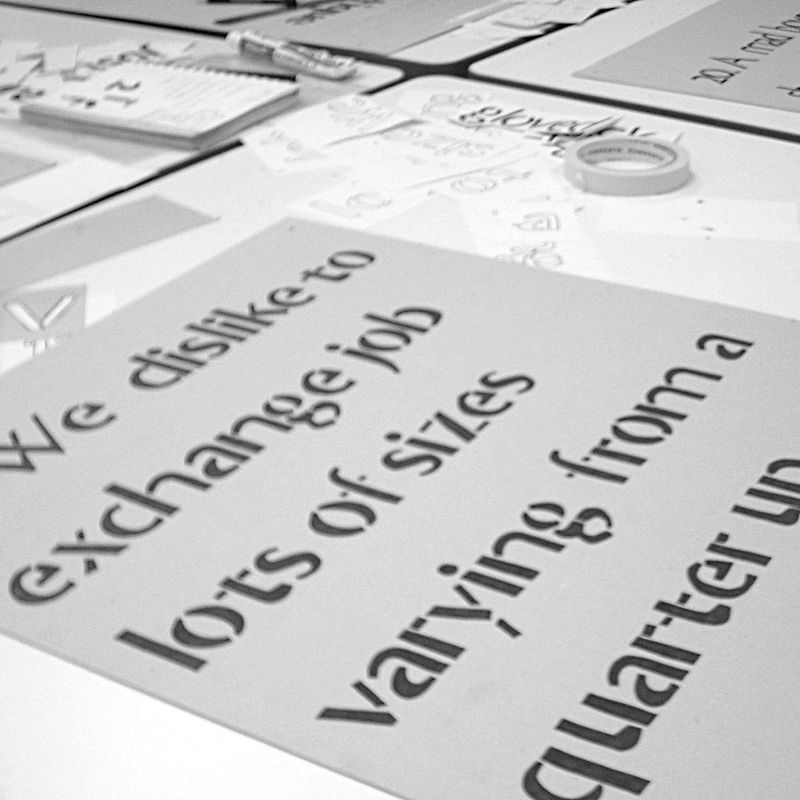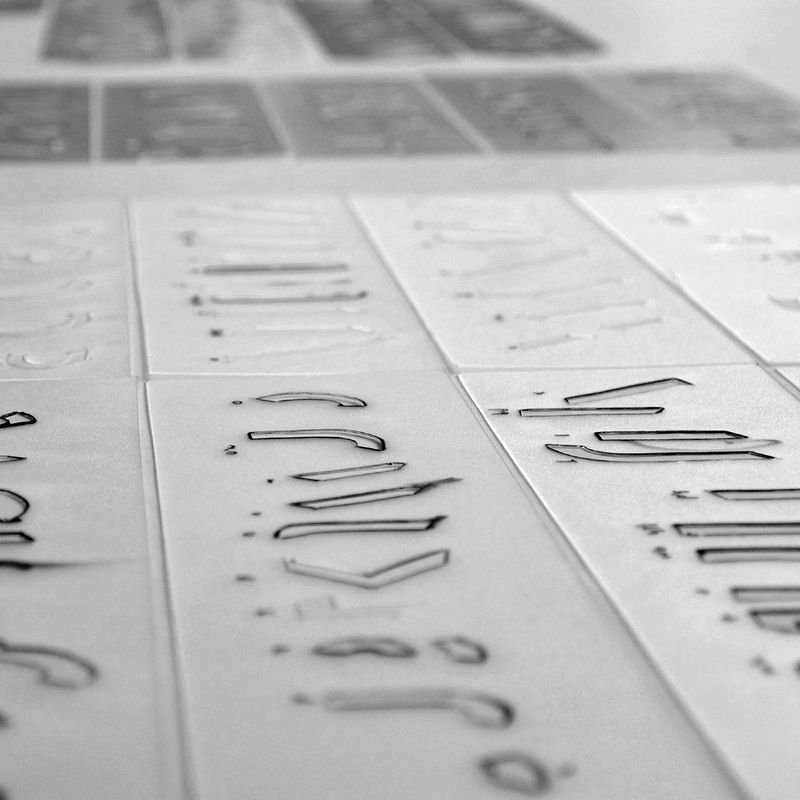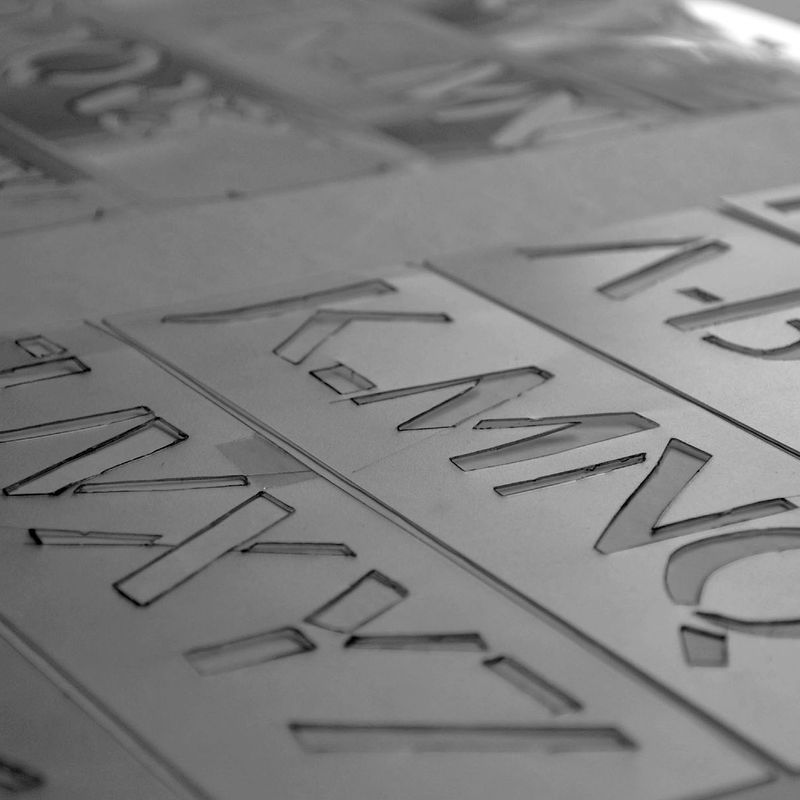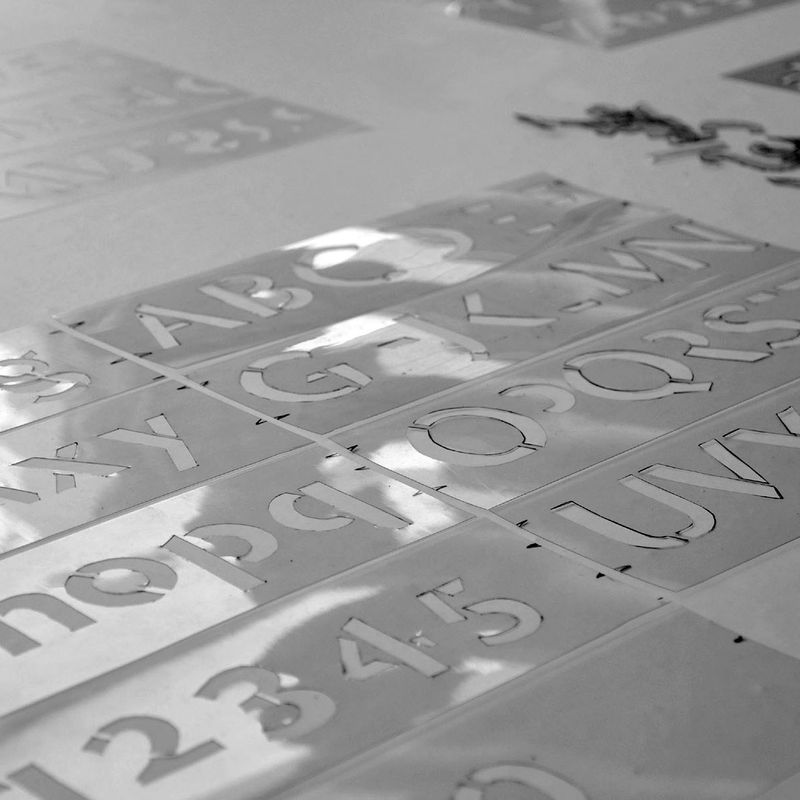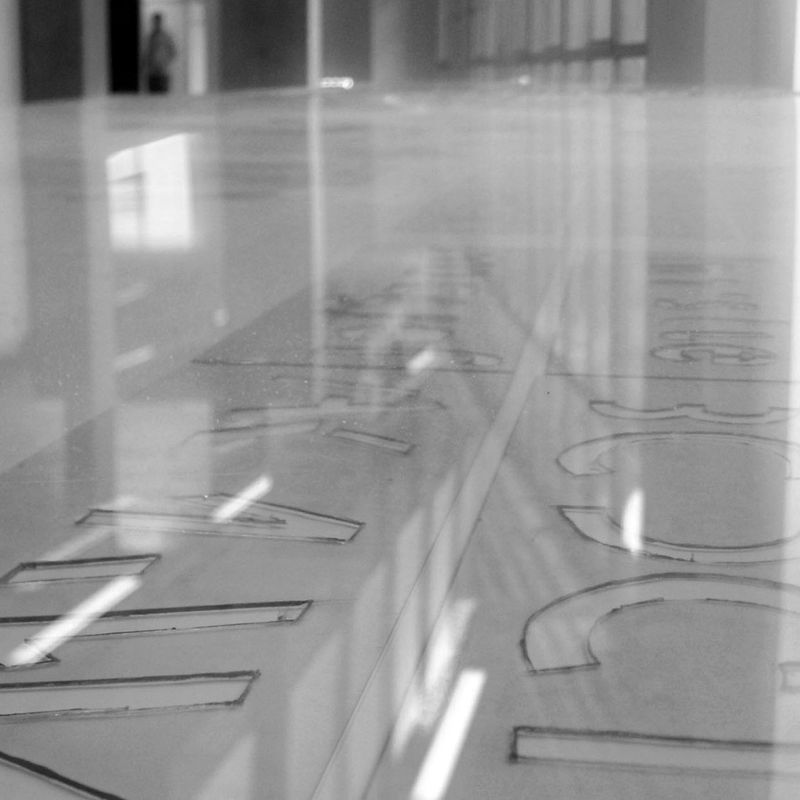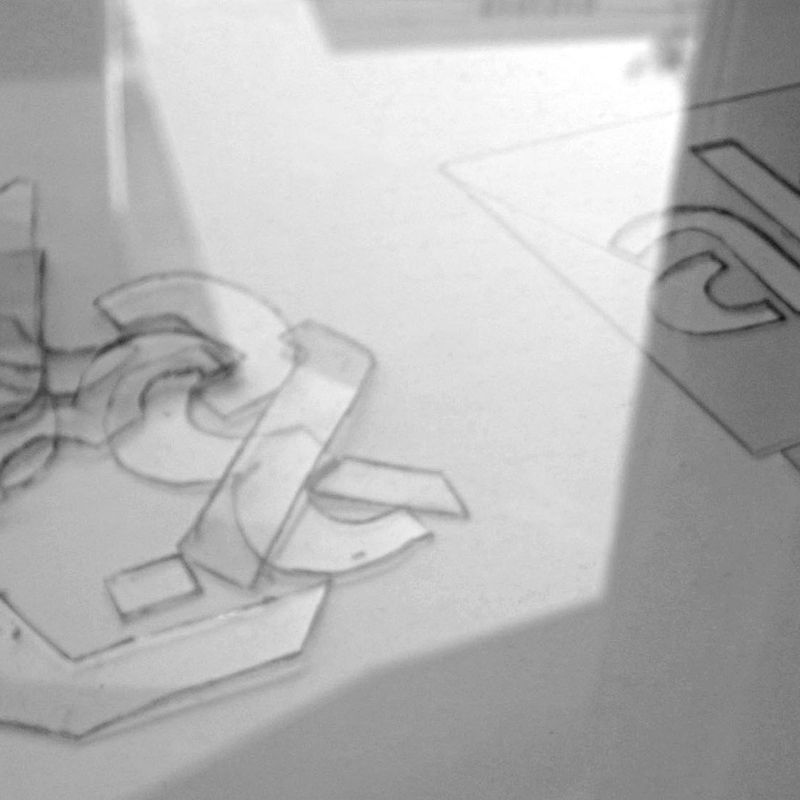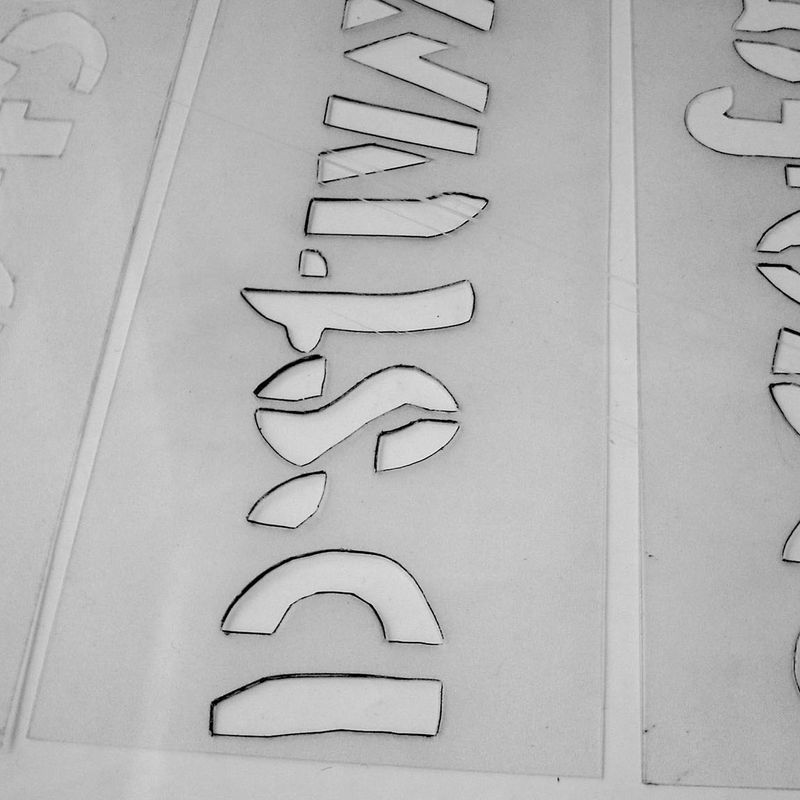Student work
Sans & Stenciling
Multiple students
VCD 204 (Typographic Design 2) #sophomore | 2011 | Turkey
The task challenges students to design a stencil tool usable to design new type. The aim of the project is multiple: one is to draw a sans serif typeface starting from a given, printed, serif (Adobe Warnock Semibold), and the other is to deconstruct the drawn sans into components by planning *bridges* and *isles* in order to design stencils, and by following a grouping logic from “geometrical,” “typometric,” “alternate case,” or “alphabetical” order.
The exercise is completed with a final workshop in which the students make use of their stencils to write a pangram poster.
Type designer Martin Majoor wrote the following on the design of sans: “It sounds simple: take a seriffed design, cut off the serifs, lower the contrast, and there you have a sans serif. But of course there is more to it than just that. I believe the most logical order when making such a family is to start with the seriffed design. From that basis a sans serif can be made. The first attempt to design a sans based on a seriffed typeface was undertaken by the Dutch type designer Jan van Krimpen. In the early 1930s he designed the seriffed Romulus, totally with a sans serif design.”
To quote type designer Fred Smeijers: “In drawing/designing letterforms stenciling is a kind of in-between technique. On one hand it is much more precise than writing, because written forms are always different from each other. Stenciling avoids that, in principle every shape stenciled from the same stencil is the same. This can be done in Illustrator as well, copy and paste. The good thing about stenciling is however that the students have to use their own hands and are confronted with their skills concerning precision in cutting and positioning and drawing letter-elements. Using pens, pencils, markers, cutters instead of a keyboard, a mouse and a screen, results often in a total other mood and attitude towards basic exercises. So stenciling has a high degree of precision yet it remains very human, you have to do it with your own hands. The latin alphabet is very suitable for stenciling because a lot shapes repeat themselves, the curve from the ’n’ can be used for the ‘h’ and ‘m’ and ‘u’ for example. Often the students have more respect of a few words stenciled by themselves in comparison with a laser-printed page. The interaction with the material and the results is often a far more positive one.”
Material: Pencil, paper, Illustrator, thick acetate foils, exacto-knife, cardboard, markers.
Pangrams:
1. Sphinx of black quartz judge my vow.
2. Pack my box with five dozen liquor jugs.
3. Big July earthquakes confound zany experimental vow.
4. Crazy Fredericka bought many very exquisite opal jewels.
5. How razorback-jumping frogs can level six piqued gymnasts!
6. We promptly judged antique ivory buckles for the next prize.
7. All questions asked by five watched experts amaze the judge.
8. Back in June we delivered oxygen equipment of the same size.
9. Whenever the black fox jumped the squirrel gazed suspiciously.
10. Back in my quaint garden jaunty zinnias vie with flaunting phlox.
11. Jaded zombies acted quaintly but kept driving their oxen forward.
12. While making deep excavations we found some quaint bronze jewelry.
13. We dislike to exchange job lots of sizes varying from a quarter up.
14. The job requires extra pluck and zeal from every young wage earner.
15. A quart jar of oil mixed with zinc oxide makes a very bright paint.
16. My help squeezed in and joined the weavers again before six o’clock.
17. The juke box music puzzled a gentle visitor from a quaint valley town.
18. Six big juicy steaks sizzled in a pan as five workmen left the quarry.
19. Just work for improved basic techniques to maximize your typing skill.
20. A mad boxer shot a quick, gloved jab to the jaw of his dizzy opponent.
21. We quickly seized the black axle and just saved it from going past him.
22. The public was amazed to view the quickness and dexterity of the juggler.
23. Six javelins thrown by the quick savages whizzed forty paces beyond the mark.
24. The explorer was frozen in his big kayak just after making queer discoveries.
